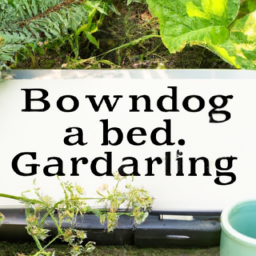How To Start A Gardening Blog
Table of Contents []
How To Start A Gardening Blog
Introduction
So, you've decided to start a gardening blog excellent idea! To get it just right, you may need some guidance on selecting topics and writing content. We're here to help read on for a detailed introduction to creating a great gardening blog!
Step 1: Choose 8-12 Topics
If you're just starting out, 8-12 topics should be enough for your blog. You may want to start with some basics such as How to pick a site for your garden' and How to design a garden layout'. Then you could move on to more advanced topics like Gardening tools and equipment' and Garden fertilisers and chemicals'. Once you've got the basics covered, you can add more topics to your blog as you progress.
Step 2: Select Popular Subtopics For Each Topic
For each of your 8-12 topics, you can generate more information by including popular subtopics. This will allow you to provide readers with a deeper understanding of the topic. For example, if a topic is How to design a garden layout' you could add subtopics such as Planning a garden layout', Choosing the right plants and trees' and Creating pathways and boundaries'.
Step 3: Write 3-4 Paragraphs For Each Subtopic
Once you've chosen the subtopics, you can start writing a short description for each one. Start by writing each paragraph with independent p tags. For example, you can create an introduction and then introduce each subtopic into detail. For each subtopic, try to include at least 3-4 paragraphs.
Step 4: Use HTML Tags For Titles and Subtitles
HTML tags make it easier for readers to navigate through your blog entries. Inlcude h2 and h3 tags for each topic and popular subtopic, as well as other HTML tags such as li and a tags. For example, you can create a list for materials needed in a garden and add hyperlinks for additional information.
Step 5: Include Charts, Tables or Lists
If there is any other complex information or data that you need to include in your blog, you can use tables, charts, and lists. This will help readers to understand the topic better and give them an overall view of what is being discussed.
Step 6: Add A Summary, Final Thoughts Or A Conclusion
At the end of your blog post, you can add a summary, final thoughts or a conclusion. This will help readers to take away the main points from the blog and help them form an opinion about the topic.
Step 7: Add References
If you've used content from other sources, be sure to add the reference along with the link. This will help readers to follow up on the research and get additional information.
Conclusion
By following these steps, you would have created an informative gardening blog. Start by selecting 8-12 topics and choose popular subtopics for deeper understanding. Use HTML tags for titles and subtitles to make the blog more navigable. Then use tables, charts or lists to make complex data easier to understand. Finally, remember to add a summary, final thoughts or a conclusion to wrap up the blog. Good luck!

Previous Page
Next Page
